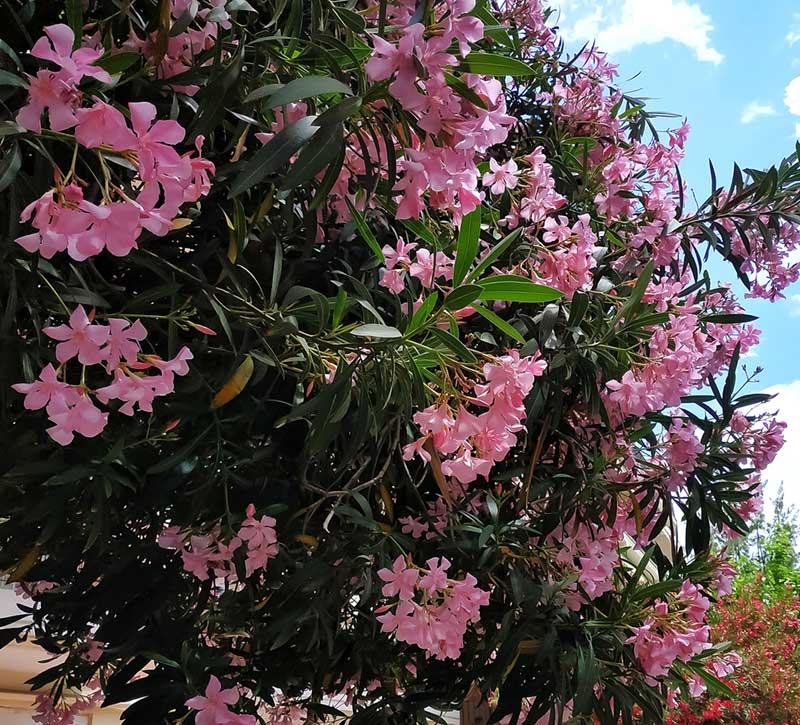The dwarf oleander is a beautiful flowering shrub that is far smaller than its full-size counterpart. It comes in pink and red, and it is grown in zones 8 through 11.
Though the flower is highly toxic, many gardeners love it for the full layer of flowers that covers this plant. They are also treasured for their constant blooming. In areas without frost, they will bloom all year. In areas that get frost, they will bloom on and off with more blooming in the spring and summer months.
The flowers are bright with five small petals. The plants will top out at anywhere from 3 to 6 feet in height and width.
Light and Temperature Requirements
Generally, the dwarf oleander likes to be planted in full sun. However, it will tolerate partial shade as long as there is direct sun part of the day. When these plants are in partial shade, they don’t bloom with as many flowers as plants located in full sun.
At the low end of its temperature tolerance, it will start to be damaged by a temperature of 20 degrees F. It generally will not live through a temperature of less than 15. On the high end, the dwarf oleander has no upper limit. It will thrive in hot temperatures and actually grow flowers that are more brightly colored the hotter it is.
Watering
The dwarf oleander may need a lot of water as it is getting established, helping its roots to dig through the soil and take hold. However, after the plant is established, it needs relatively little water. In fact, watering it too often can result in a fungal infection. The best advice is to water it deeply when there is below-average rainfall and don’t water it again until it has dried out. Being under-watered can also cause disease, causing the branches to become stressed and die. About an inch of water per week is most helpful.

Soil
The soil needed by these shrubs should have a pH of between 5 and 7.5. They don’t like to be planted in watery areas, but they will tolerate salt spray.
When planting your shrub, add some loose soil to the hole you dig. This can be loose topsoil, potting soil or peat moss. Enriching the soil with compost or composted manure can also be helpful near the plant’s root ball.
In the spring, summer and fall you can fertilize these plants with a granular mixture. You can also use bone meal or a liquid fertilizer during these times.
Propagation
If you are growing your shrubs from seeds, don’t cover them with soil. The seeds need light to germinate. If you are planting multiple plants or seedlings, place at least three feet apart. The best practice is to plant them away from structures like a house, tree, or garage, like some caterpillars like this plant, and may eat it and build their nests nearby. If the plant is not near a structure that can support a nest, it will be less attractive to caterpillars.
Toxicity
Like it’s larger version, the dwarf oleander is highly toxic. Never eat any part of the plant, and wear protective gloves when you prune them. The sap from the branches can cause skin irritation. These plants should not be anywhere that kids or pets will spend time. Don’t burn the old plants as the smoke will also be toxic.




